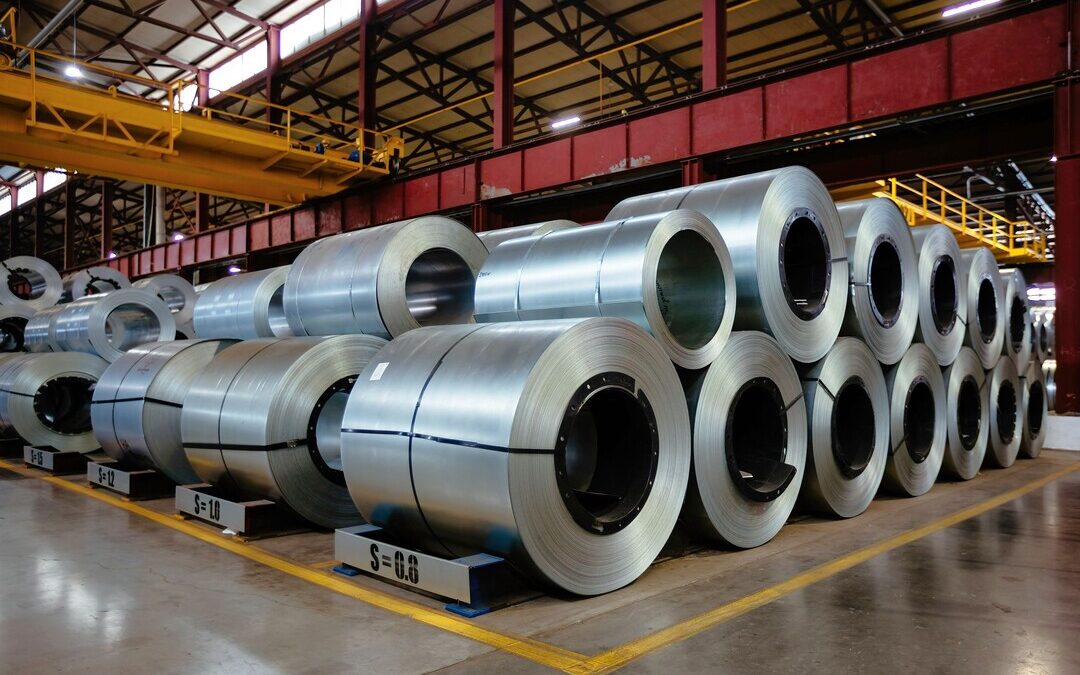India’s Steel Exports Face $14.5B Carbon Hit by 2050 Thanks to EU CBAM: EY
EU carbon tax could erode India’s steel export margins without urgent shift to low-emission production methods.
India’s steel sector could face a financial hit of more than $14.5 billion by 2050 due to tightening global carbon regulations, including the European Union’s Carbon Border Adjustment Mechanism, a new report by EY-Parthenon said on Monday.
The report warned that Indian steel exports to the EU, projected to grow from 7 million metric tons today to 15 MMT by mid-century, may become increasingly uncompetitive unless the sector sharply reduces its carbon intensity.
Currently, Indian steel emits nearly double the carbon per ton compared with EU benchmarks.
“Without urgent decarbonization, CBAM alone could result in a cost burden of ₹19,277 crore by 2030,” said Kapil Bansal, lead author and partner at EY-Parthenon.
EU Benchmarks Tighten as Carbon Prices Surge
The CBAM, which taxes imports based on embedded emissions, will increasingly penalize carbon-intensive steelmakers.
India’s average emissions of 2.5 tons of carbon dioxide per ton of steel significantly exceed the EU’s 1.28 tCO₂ benchmark. That gap is expected to widen as the EU phases out free allowances and raises carbon prices from $71/tCO₂ today to more than $400 by 2050.
“This is not just a climate issue—it’s an economic one. Indian steelmakers risk losing critical export share if they don’t adapt,” Bansal said.
Green Steel Demand Set to Soar to 179 MMT by FY50
While CBAM poses a threat, the report also identified a parallel opportunity: explosive domestic demand for low-emission “green steel.”
India’s green steel demand is projected to rise from virtually zero today to 179.17 MMT by FY50, driven by sustainable construction, infrastructure, and electric vehicle manufacturing.
The construction sector alone will account for 102.6 MMT of that demand by mid-century.
Supply Shortfalls Could Undermine Net-Zero Targets
However, under current policies and technologies, India faces a green steel supply-demand gap of over 100 percent by FY40, and 241 percent by FY50. Even an accelerated net-zero 2050 scenario leaves a 19 percent shortfall, the report said.
India’s green steel production—dominated by hydrogen-based Direct Reduced Iron (H₂ DRI)—must be scaled rapidly, with supplementary methods like electric arc furnaces powered by renewable energy needed to close the gap.
Green Premiums to Shrink, Making Low-Carbon Steel Viable
Green steel currently carries a price premium of $210 per ton, raising automotive costs by 4.1 percent, construction by 3.7 percent and infrastructure by 5.2 percent. But by 2030, this premium is expected to shrink to just $7 per ton due to falling hydrogen prices and economies of scale.
“By 2035, green steel will be nearly cost-neutral. The real risk lies in sticking with carbon-heavy BF-BOF steel as carbon taxes mount,” Bansal said.
The report forecasts blast furnace-basic oxygen furnace steel prices rising 81 percent to $1,193/ton by 2050 due to escalating carbon prices, while green steel could stabilize below $700/ton.
BF-BOF refers to a standard integrated steelmaking process where molten iron from a blast furnace is further processed in a basic oxygen furnace to produce steel.
Policy Push Needed to Stay Competitive
EY recommends India implement a carbon pricing mechanism — targeting $90 to $100/tCO₂ by 2040 — alongside subsidies, public procurement mandates, and green steel purchase agreements.
“Aligning with global climate regulations is now a trade imperative,” said Bansal.
The report calls for end-users like automakers and real estate developers to begin procuring green steel a decade ahead of their net-zero deadlines, ramping up use by 10 percent annually.
With global investors increasingly favoring low-carbon supply chains, India’s ability to decarbonize its steel sector could define its competitiveness.
“India can either embrace the transition and lead the green steel revolution — or pay the cost of inaction,” Bansal said.
Nirmal Menon
Related posts

Subscribe
Error: Contact form not found.


